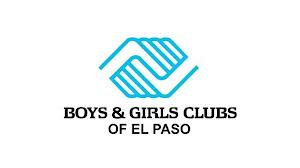In case you haven’t heard, DonorDreams blog is hosting for the second year in a row the Nonprofit Blog Carnival in the month of May. This year’s theme revolves around building loyalty among various non-profit stakeholder groups such as donors, employees, volunteers, etc. If you are a blogger and looking for the “Call for Submissions,” then click here. The carnival will be posted right here at DonorDreams blog on Wednesday, May 28, 2014. Stay tuned!
In the interest of building momentum, we’ve dedicated the entire month of blog posts to this topic. We’re specifically focusing on what a variety of non-profit organizations are doing (or are looking at doing) to build loyalty.
Staff-Kids-Volunteers-Donors:
Rinse. Lather.Repeat.
Boys & Girls Club of El Paso
 Art Jaime is the Chief Professional Officer of the Boys & Girls Clubs of El Paso, and he sees the challenges of building loyalty to his non-profit organization as an interconnected ecosystem of staff, kids, board members and donors. He points out that loyalty-based management is a simple concept, but it is something that is very difficult to achieve.
Art Jaime is the Chief Professional Officer of the Boys & Girls Clubs of El Paso, and he sees the challenges of building loyalty to his non-profit organization as an interconnected ecosystem of staff, kids, board members and donors. He points out that loyalty-based management is a simple concept, but it is something that is very difficult to achieve.
Here is a simplified version of how Art sees his interconnected world:
- Hire and retain quality youth development professionals who are likable
- Kids attend the Club because of their relationships with staff
- Increased frequency of participation deepens the impact of programming which drives outcomes data
- Good outcomes and impact data inspires board volunteers and provides confidence in talking to donors about the Club’s case for support
- Good outcomes data creates great relationships with foundations and government agencies and contributes to a vibrant grant writing program
- Long-term board volunteer relationships (who are consistently sharing awesome success stories from the frontline) with individual donors makes for happy, recurring investors in the Club’s mission
 “It all ties together,” explains Jaime. “The big challenge is creating a culture that appreciates and strives to create loyalty.”
“It all ties together,” explains Jaime. “The big challenge is creating a culture that appreciates and strives to create loyalty.”
So, how is Art trying to build an organizational culture of loyalty? He isn’t trying to over think it, and he is starting with things he can easily do. The following are just a few examples:
- engaging stakeholders in a variety of planning activities
- modeling loyalty in every day activities
- recognizing staff
- thanking and stewarding donors
- trying to spend more one-on-one time with board volunteers
- seeking advice and feedback from a variety of stakeholders
Frederick Reichheld is the author of “The Loyalty Effect” and one of thought-leaders on the importance of loyalty-based management. It is amazing how Art’s observations on the interconnectedness of it all is spot on with Reichheld’s words found on page 22:
“If we think of businesses as atoms, with customers, employees, and investors as their subatomic particles, then we will study the way those basic components interact to create higher levels of stability and value creation.“
Congratulations, Art. I think you are on the right path!
=================================
If you want to learn more about what other non-profit organizations are doing to build loyalty among various stakeholder groups (e.g. donors, employees, volunteers, etc), then tune in here to DonorDreams blog every Tuesday and Thursday throughout the month of May. We will also publish the Nonprofit Blog Carnival on May 28, 2014 with a number of links to other non-profit bloggers who are talking about loyalty related themes.
Here’s to your health!
Erik Anderson
Founder & President, The Healthy Non-Profit LLC
www.thehealthynonprofit.com
erik@thehealthynonprofit.com
http://twitter.com/#!/eanderson847
http://www.facebook.com/eanderson847
http://www.linkedin.com/in/erikanderson847

Art has a great plan! I would to hear more about how he models loyalty in every day activities. What does that look like in his Club operations?